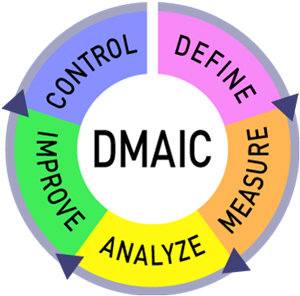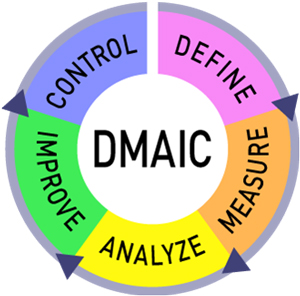Andy Trainer
11 Dec 2012
Controlling Diabetes With Six Sigma

An American man who was diagnosed with diabetes used his experience with Six Sigma to control the disease.
William Howell discovered he had Type 2 diabetes and was understandably concerned - potential health risks from diabetes if left unmanaged include blindness, strokes and heart-attacks.
However, William was a Quality professional and was aware of Six Sigma's framework for removing defects. By viewing his undesired symptoms as defects, he was able to use Six Sigma to bring his diabetes under control. You can read excerpts from William's book about managing diabetes here.
If you want to learn more about Six Sigma, try our Six Sigma Training.
DMAIC Phases

Howell decided to divide his diabetes plan into the five DMAIC stages - define, measure, analyse, improve and control.
If you want to find out more about DMAIC and other Six Sigma terms, why not download our Lean Six Sigma Glossary.
This is how he used each stage of DMAIC to manage his illness:
- Define Howell created a goal statement. His symptoms were related to his high blood glucose level, so this was the first target - reduce the level to a healthier 125mg/dl or less. His other main goal was to control his symptoms naturally rather than continuing to depend on medication by improving his diet and exercising more.
- Measure - Howell continuously measured his blood glucose levels and charted his food intake, including calories, fat and sugar.
- Analyse- He would then analyse this data for trends - noticing any correspondence between a day of high-calorie intake and high glucose levels, for example.
- Improve- Using his charts, he was able to notice any areas that he could improve upon to further his chance of achieving his goals. If his biggest contributor to high blood glucose levels was the days when he ate doughnuts, for example, his chart would reflect this and he could make the appropriate alterations to his lifestyle.
- Control- By being completely aware of any changes and reasons for them, Howell was able to make constructive choices with the help of his doctor. Any aspects which were causing difficulty could be easily identified and addressed quickly.
Less than two months after his initial diagnosis, William Howell managed to reach his initial target of reducing his blood glucose level to below 125 mg/dl.
Continuing with the process, he also ends up achieving his other targets - he weaned himself off any blood glucose controlling medicine and saw a reduction in almost all of his symptoms.
Whilst much of this success should rightly be attributed to the help given to him by medical professionals, Howell's use of a Six Sigma framework clearly aided him in his own controlling of the aspects of the disease he was responsible for, such as diet.
Six Sigma frameworks can clearly be useful outside of business despite its origins because as Howell himself says: “With the use of simple statistical methods and simple graphs, diabetes and many other diseases can be controlled.”

